
Pretoria: The Jacaranda City of South Africa
Explore Pretoria, South Africa's administrative capital, renowned for its jacaranda-lined streets, historical landmarks, and vibrant cultural experiences.
Pretoria, the administrative capital of South Africa, is a city of grand avenues, historic buildings, and vibrant cultural experiences. Nestled in the northern part of Gauteng Province, Pretoria is known for its beautiful jacaranda trees that bloom in a riot of purple in spring, giving the city its nickname, 'Jacaranda City'. One of the city's most iconic landmarks is the Union Buildings, the official seat of the South African government. Designed by Sir Herbert Baker, these imposing sandstone structures sit atop Meintjieskop Hill and offer a panoramic view of the city. The surrounding gardens are a lovely place to relax and take in the scenery. For history enthusiasts, the Voortrekker Monument is a must-visit. This massive granite structure commemorates the Voortrekkers who left the Cape Colony between 1835 and 1854. The monument's impressive architecture and the museum inside provide a deep dive into the country's pioneering past. Pretoria also boasts a rich cultural scene. The National Zoological Gardens of South Africa, one of the largest zoos in the country, offers a fascinating day out for families. Additionally, the city's many museums, such as the Pretoria Art Museum and the Ditsong National Museum of Natural History, offer insightful explorations into South African art and natural history. No visit to Pretoria would be complete without experiencing its vibrant culinary scene. From traditional South African fare to international cuisine, the city's restaurants cater to all tastes. Don't miss out on sampling local delicacies like biltong, boerewors, and melktert.
Local tips in Pretoria
- Visit during spring (September to November) to see the jacarandas in full bloom.
- Wear comfortable walking shoes as the city is best explored on foot, especially around historical sites.
- Check out the local markets for unique souvenirs and a taste of local culture.
- Use the Gautrain for a quick and convenient way to get from Pretoria to Johannesburg and OR Tambo International Airport.
- Be mindful of safety; avoid walking alone at night and keep your belongings secure.
Neighbourhoods in Pretoria
Pretoria: The Jacaranda City of South Africa
Pretoria, the administrative capital of South Africa, is a city of grand avenues, historic buildings, and vibrant cultural experiences. Nestled in the northern part of Gauteng Province, Pretoria is known for its beautiful jacaranda trees that bloom in a riot of purple in spring, giving the city its nickname, 'Jacaranda City'. One of the city's most iconic landmarks is the Union Buildings, the official seat of the South African government. Designed by Sir Herbert Baker, these imposing sandstone structures sit atop Meintjieskop Hill and offer a panoramic view of the city. The surrounding gardens are a lovely place to relax and take in the scenery. For history enthusiasts, the Voortrekker Monument is a must-visit. This massive granite structure commemorates the Voortrekkers who left the Cape Colony between 1835 and 1854. The monument's impressive architecture and the museum inside provide a deep dive into the country's pioneering past. Pretoria also boasts a rich cultural scene. The National Zoological Gardens of South Africa, one of the largest zoos in the country, offers a fascinating day out for families. Additionally, the city's many museums, such as the Pretoria Art Museum and the Ditsong National Museum of Natural History, offer insightful explorations into South African art and natural history. No visit to Pretoria would be complete without experiencing its vibrant culinary scene. From traditional South African fare to international cuisine, the city's restaurants cater to all tastes. Don't miss out on sampling local delicacies like biltong, boerewors, and melktert.
When is the best time to go to Pretoria?
Iconic landmarks you can’t miss
National Zoological Gardens of South Africa
Explore the National Zoological Gardens of South Africa in Pretoria - a biodiversity haven with thousands of animals and educational experiences for all.

Pretoria National Botanical Gardens
Discover the enchanting Pretoria National Botanical Gardens, a lush sanctuary showcasing South Africa's diverse flora and stunning landscapes.

Voortrekker Monument
Explore the Voortrekker Monument, a stunning tribute to South Africa's pioneers, offering rich history and breathtaking views in Pretoria.

Groenkloof Nature Reserve
Discover the natural beauty of Groenkloof Nature Reserve, a serene escape in Pretoria, perfect for hiking, picnicking, and wildlife spotting.

Burgers Park
Experience the tranquility of Burgers Park, a serene urban oasis in Pretoria Central filled with lush greenery and beautiful flowerbeds.
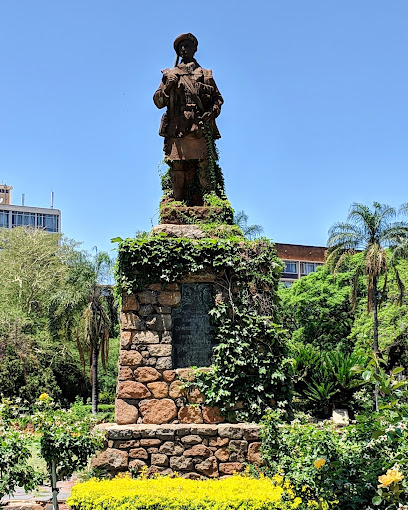
Union Buildings Gardens
Discover the serene beauty and rich history of Union Buildings Gardens, a must-visit memorial park in Pretoria, South Africa.

Moreleta Kloof Nature Reserve
Immerse yourself in nature at Moreleta Kloof Nature Reserve, a peaceful escape in Pretoria, perfect for hiking, birdwatching, and family picnics.

Cedar Junction Family Resort
Experience the ultimate family adventure at Cedar Junction Family Resort, Pretoria's premier water park with thrilling rides and relaxing picnic spots.

Rietvlei Nature Reserve
Explore Rietvlei Nature Reserve: A vast urban oasis in Pretoria, perfect for wildlife enthusiasts and nature lovers alike.

Loftus Park
Discover Loftus Park in Pretoria - your ultimate shopping haven with diverse dining and entertainment options for the whole family.

Faerie Glen Nature Reserve
Explore the serene beauty of Faerie Glen Nature Reserve in Pretoria, a perfect escape for nature lovers and outdoor enthusiasts seeking tranquility and adventure.

Magnolia Dell
Explore the serene landscapes of Magnolia Dell, a tranquil park in Pretoria perfect for relaxation and enjoying nature's beauty.

Jan Cilliers Park
Explore the beauty and tranquility of Jan Cilliers Park in Groenkloof, Pretoria – a perfect natural escape for tourists and nature lovers.

Wonderboom Nature Reserve
Discover the breathtaking landscapes and rich biodiversity of Wonderboom Nature Reserve in Pretoria, South Africa, a haven for nature lovers and adventure seekers alike.
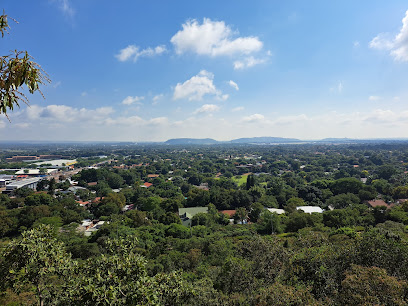
Zita Park
Explore Zita Park, a scenic haven in Pretoria offering lush landscapes, serene walking trails, and delightful picnic spots for nature lovers.

Unmissable attractions to see
Montecasino
Experience the thrill of gaming, dining, and live entertainment at Montecasino, a premier destination for tourists in Johannesburg's vibrant Fourways area.

Johannesburg Zoo
Explore Johannesburg Zoo - A Wildlife Haven in the Heart of the City

Johannesburg Botanical Gardens
Experience the tranquil beauty of Johannesburg Botanical Gardens, a lush retreat in Emmarentia filled with diverse plant life and scenic views.

Aerial Cableway Hartbeespoort
Explore breathtaking views and thrilling adventures at the Aerial Cableway Hartbeespoort, a premier tourist attraction in South Africa.

Pretoria National Botanical Gardens
Experience the tranquility of Pretoria National Botanical Gardens, where diverse flora and serene landscapes offer a perfect escape for nature lovers.

Dinokeng Game Reserve
Discover Dinokeng Game Reserve, where wildlife roams free and nature unfolds in breathtaking splendor, just waiting to be explored.

Hartbeespoort Dam Snake and Animal Park
Discover the fascinating wildlife at Hartbeespoort Dam Snake and Animal Park, where adventure meets education in a beautiful natural setting.

Groenkloof Nature Reserve
Explore the natural beauty of Groenkloof Nature Reserve, a serene escape in Pretoria with diverse wildlife and stunning landscapes.
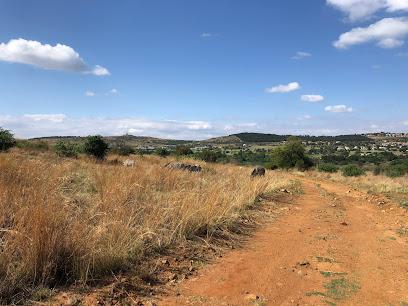
Upside Down House
Discover the whimsical Upside Down House in Hartbeespoort, a unique tourist attraction offering an unforgettable experience of perspective and creativity.

Hennops Hiking Trail & Mtb Trail
Discover the breathtaking landscapes and thrilling trails at Hennops Hiking Trail & MTB Trail, a perfect outdoor escape near Pretoria.
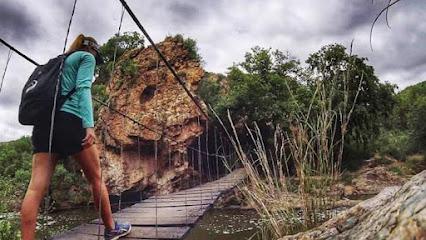
Bothongo Rhino & Lion Nature Reserve
Explore the stunning landscapes and diverse wildlife at Bothongo Rhino & Lion Nature Reserve, a premier destination for nature lovers in South Africa.

Union Buildings Gardens
Explore the lush landscapes and rich history of the Union Buildings Gardens, a serene escape in Pretoria, South Africa's capital city.

The South African State Theatre
Discover the vibrant performing arts scene at the South African State Theatre, a cultural landmark in Pretoria showcasing diverse productions that inspire and entertain.

Hartbeespoort Dam Wall
Experience breathtaking views and outdoor adventures at Hartbeespoort Dam Wall, a top tourist attraction in South Africa's scenic landscape.
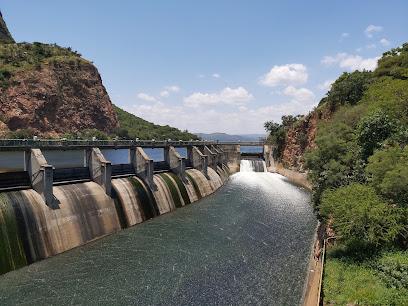
Moreleta Kloof Nature Reserve
Explore the tranquility of Moreleta Kloof Nature Reserve, a nature lover's paradise in Pretoria with scenic trails and diverse wildlife.

Essential places to dine
Crawdaddy's Brooklyn
Experience flavorful steaks and fresh seafood at Crawdaddy's Brooklyn - your ultimate dining destination in Pretoria.

Kream Restaurant Brooklyn
Discover exquisite dining at Kream Restaurant in Brooklyn - where modern elegance meets flavorful cuisine in Pretoria.

The Blue Crane Restaurant and Bar
Discover exquisite flavors at The Blue Crane Restaurant and Bar in Pretoria—where local ingredients meet exceptional service.

Pachas Restaurant
Experience fine dining at Pachas Restaurant in Pretoria—where exceptional cuisine meets elegance in every bite.

A'la Turka
Discover authentic Turkish flavors and cultural experiences at A'la Turka in Pretoria.

Hillside Tavern
Discover Hillside Tavern in Lynnwood: A vibrant bar & grill offering mouthwatering dishes and refreshing drinks in a welcoming atmosphere.

Caraffa Restaurant
Experience authentic Italian cuisine at Caraffa Restaurant in Pretoria - where every meal is a delicious journey through Italy's culinary traditions.

Blu Saffron
Discover the culinary artistry at Blu Saffron in Waterkloof, Pretoria—a delightful fusion of local tastes and international flair.

PRIVA
Discover culinary excellence at PRIVA in Waterkloof Heights, Pretoria - where taste meets sophistication.

Forti Grill and Bar
Experience fine Italian dining at Forti Grill and Bar in Menlyn - where exquisite flavors meet elegant ambiance.

Wood & Fire
Discover the culinary artistry at Wood & Fire in Pretoria—where delicious flavors meet a warm ambiance.

La Pentola
Discover exquisite flavors at La Pentola in Pretoria – where local ingredients meet exceptional culinary artistry.

La Madeleine
Experience authentic French cuisine at La Madeleine in Lynnwood Ridge, Pretoria – where every meal feels like a taste of Paris.

Brasserie de Paris Pretoria
Experience exquisite French cuisine at Brasserie de Paris in Pretoria—where elegance meets culinary artistry.

De Kloof Restaurant
Experience fine dining at De Kloof Restaurant in Pretoria - where exquisite cuisine meets breathtaking views in an elegant setting.

Markets, malls and hidden boutiques
Menlyn Park Shopping Centre
Discover the vibrant Menlyn Park Shopping Centre in Pretoria, a hub of shopping, dining, and entertainment perfect for all visitors.

Brooklyn Mall
Explore Brooklyn Mall in Pretoria for a vibrant shopping experience with diverse retail options, delicious dining, and family-friendly entertainment.

The Grove Mall
Explore The Grove Mall, Pretoria's vibrant shopping hub with diverse retail, dining, and entertainment options for an unforgettable experience.

Woodlands Boulevard Shopping Complex
Discover an exciting shopping and entertainment experience at Woodlands Boulevard Shopping Complex in Pretoria, South Africa.

Brooklyn Mall - Brooklyn Square
Explore Brooklyn Mall in Pretoria – a premier shopping destination featuring diverse retail, dining, and entertainment options for an unforgettable experience.

Forever New Brooklyn
Explore stylish women's clothing at Forever New Brooklyn in Pretoria's vibrant Brooklyn Mall, where fashion meets elegance.

Old Farm Shopping Centre
Explore the vibrant Old Farm Shopping Centre in Pretoria, a shopping haven filled with diverse stores, delightful dining, and local culture.
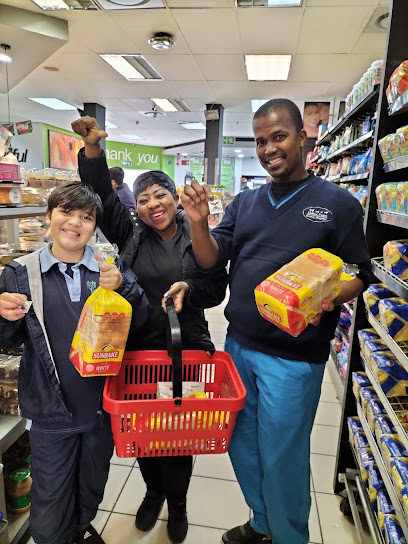
PLAASLIK Gift Shop
Explore the vibrant culture of South Africa through unique handcrafted treasures at the PLAASLIK Gift Shop in Equestria, Pretoria.

Blue Boho Shop
Explore the Blue Boho Shop in Pretoria for unique clothing and fabric treasures that blend style with bohemian charm.

Menlyn Park Crafters Market
Explore the vibrant Menlyn Park Crafters Market in Pretoria for unique gifts and local treasures, showcasing the artistry of South Africa's finest artisans.

THE SPACE
Explore The Space in Pretoria for trendy women's fashion, local designer pieces and a delightful shopping experience in a stylish ambiance.

Die Rooi Deur Boutique & Gifts Pretoria
Explore the charm of Die Rooi Deur Boutique & Gifts in Pretoria – a treasure trove of unique clothing and gifts reflecting local artistry.
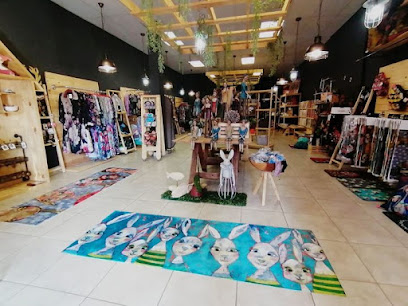
Rasta Rockers Roots Pty Ltd
Discover vibrant fashion and local artistry at Rasta Rockers Roots Pty Ltd in Pretoria, a must-visit for unique clothing and accessories.

Vintro Clothing
Explore a world of unique vintage clothing at Vintro Clothing in Pretoria, where timeless fashion meets sustainable style.

salvation
Explore Salvation Boutique in Menlyn Park for exclusive fashion and lifestyle treasures that capture Pretoria's vibrant spirit.

Essential bars & hidden hideouts
Eastwoods
Experience the vibrant flavors and lively atmosphere at Eastwoods, Pretoria's favorite grill and sports bar destination.

Blue Room Hatfield
Experience the vibrant nightlife and delicious dining at Blue Room Hatfield, a premier bar and restaurant in Pretoria's bustling Hatfield area.

Propaganda Pretoria
Discover the vibrant nightlife at Propaganda Pretoria, a premier night club and event venue offering cocktails, dancing, and a lively atmosphere.

Culture Club
Discover a vibrant culinary experience at Culture Club, where tantalizing tapas and a lively atmosphere await in the heart of Pretoria.

Thirst At 28° East
Discover the lively ambiance of Thirst At 28° East, a pub in Pretoria offering delicious pizzas and a wide selection of drinks in a welcoming atmosphere.

Hillside Tavern
Discover the vibrant flavors of Hillside Tavern in Lynnwood, Pretoria – where delicious food meets a lively atmosphere for an unforgettable dining experience.

The Blue Room Central
Experience the vibrant nightlife of Pretoria at The Blue Room Central, the ultimate pub and event venue for locals and tourists alike.
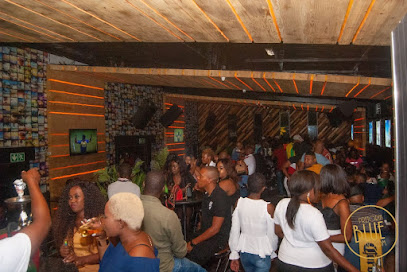
Rafters Pub Pretoria
Discover Rafters Pub in Pretoria - a lively bar and grill featuring delicious food, live music, and the perfect atmosphere for sports enthusiasts.

House 22
Discover the vibrant nightlife of House 22 in Sunnyside, Pretoria, where delicious dining meets an energetic bar and disco club experience.

Amaros Pretoria
Experience the vibrant nightlife of Pretoria at Amaros, where delicious food, refreshing drinks, and live music create unforgettable moments.

Channel M Night Club
Discover Pretoria's nightlife at Channel M Night Club, where live music, delicious grills, and an electrifying atmosphere await.

The Hang Over Sports Bar
Experience the thrill of live sports, delicious food, and local culture at The Hang Over Sports Bar in Pretoria, a perfect spot for tourists seeking fun.

SOWAAR BAR
Experience the vibrant atmosphere and delicious grilled cuisine at Sowaar Bar, a top destination for nightlife in Pretoria.

Four Four Two
Four Four Two: A lively bar in Pretoria's CBD, offering a delightful mix of beverages and vibrant nightlife to enhance your travel experience.

Die Kantoor Pub & Restaurant
Discover the lively ambiance and delightful flavors at Die Kantoor Pub & Restaurant in Pretoria, perfect for a memorable dining experience.

Local Phrases
-
- HelloHaai
[haa-ee] - GoodbyeTotsiens
[toh-tseens] - YesJa
[yah] - NoNee
[nee] - Please/You're welcomeAsseblief
[us-seh-bleef] - Thank youDankie
[dahn-kee] - Excuse me/SorryJammer
[yahm-mer] - How are you?Hoe gaan dit?
[hoo gahn deet] - Fine. And you?Goed. En jy?
[khood. en yai] - Do you speak English?Praat jy Engels?
[praht y ai-ngels] - I don't understandEk verstaan nie
[ayk feh-stahn nee]
- HelloHaai
-
- I'd like to see the menu, pleaseEk wil die spyskaart sien, asseblief
[ayk vil dee spay-skahrt seen, us-seh-bleef] - I don't eat meatEk eet nie vleis nie
[ayk ayt nee flays nee] - Cheers!Gesondheid!
[geh-sund-hate] - I would like to pay, pleaseEk wil asseblief betaal
[ayk vil us-seh-bleef be-tahl]
- I'd like to see the menu, pleaseEk wil die spyskaart sien, asseblief
-
- Help!Hulp!
[huhlp] - Go away!Gaan weg!
[kahn vehg] - Call the Police!Bel die Polisie!
[bel dee poh-lee-see] - Call a doctor!Bel 'n dokter!
[bel un dawk-tehr] - I'm lostEk is verlore
[ayk is fehr-loh-ruh] - I'm illEk is siek
[ayk is seek]
- Help!Hulp!
-
- I'd like to buy...Ek wil koop...
[ayk vil kohp] - I'm just lookingEk kyk net
[ayk kai-k net] - How much is it?Hoeveel kos dit?
[hoo-vayl kohs deet] - That's too expensiveDit is te duur
[deet is tay dure] - Can you lower the price?Kan jy die prys verlaag?
[kahn yai dee prees fehr-lahg]
- I'd like to buy...Ek wil koop...
-
- What time is it?Hoe laat is dit?
[hoo laht is deet] - It's one o'clockDit is een uur
[deet is ayn oor] - Half past (10)Half tien
[hahlf teeyn] - MorningOggend
[oh-ghent] - AfternoonMiddag
[mi-dahg] - EveningAand
[ahnt] - YesterdayGister
[ghis-tehr] - TodayVandag
[fahn-dahg] - TomorrowMôre
[moh-ruh] - 1Een
[ayn] - 2Twee
[twee] - 3Drie
[dree] - 4Vier
[feer] - 5Vyf
[fayf] - 6Ses
[sehs] - 7Sewe
[seh-weh] - 8Agt
[ahgt] - 9Nege
[neh-ghuh] - 10Tien
[teeyn]
- What time is it?Hoe laat is dit?
-
- Where's a/the...?Waar is 'n/die...?
[vahr is un/dee] - What's the address?Wat is die adres?
[vaht is dee ah-drehs] - Can you show me (on the map)?Kan jy my wys (op die kaart)?
[kahn yai may vays (ohp dee kahrt)] - When's the next (bus)?Wanneer is die volgende (bus)?
[vahn-ehr is dee foel-gende (buhs)] - A ticket (to ....)'n Kaartjie (na ....)
[un kah-uh-chi (nah)]
- Where's a/the...?Waar is 'n/die...?
History of Pretoria
-
Pretoria, named after the Voortrekker leader Andries Pretorius, was founded in 1855. It quickly became the administrative capital of the South African Republic (ZAR). The city's establishment marked the Voortrekkers' quest for autonomy and their effort to create a new homeland in the interior of South Africa.
-
Pretoria played a pivotal role in the First Boer War (1880-1881), which was fought between the British Empire and the Boer settlers. The war ended with the Pretoria Convention, which granted self-governance to the South African Republic under nominal British oversight. This moment solidified Pretoria's position as a significant political center.
-
Completed in 1913, the Union Buildings are an iconic symbol of Pretoria and South Africa. Designed by Sir Herbert Baker, they serve as the official seat of the South African government and the office of the President. The buildings are a testament to South Africa's transition from a colonial past to a unified nation.
-
During the apartheid era, Pretoria was the administrative heart of the regime. Key government offices and institutions that enforced apartheid policies were located here. The city's Union Buildings became a focal point of both the enforcement of apartheid and the protests against it, including significant events such as the Women's March in 1956.
-
On May 10, 1994, Nelson Mandela was inaugurated as South Africa's first black president at the Union Buildings in Pretoria. This historic event marked the end of apartheid and the beginning of a new era of democracy and reconciliation in South Africa. The inauguration was attended by dignitaries from around the world and symbolized a significant moment in global history.
-
Pretoria is a melting pot of cultural diversity, reflecting South Africa's rich heritage. The city is home to various cultural landmarks, including the Voortrekker Monument, Freedom Park, and the Pretoria Art Museum. Each of these sites offers a glimpse into the multifaceted history and culture of the region, celebrating both its indigenous and colonial past.
-
Pretoria is known as an educational hub, housing some of the country's most prestigious institutions, including the University of Pretoria and Tshwane University of Technology. These institutions contribute significantly to the city's vibrant academic and research community, making it a center of learning and innovation in South Africa.
Pretoria Essentials
-
Pretoria is served by two major airports: OR Tambo International Airport and Lanseria International Airport. Both airports are located in Johannesburg, about 45-60 minutes by car from Pretoria. From the airport, you can take a taxi, use ride-sharing services, or rent a car to reach Pretoria. Alternatively, the Gautrain, a rapid transit railway, connects OR Tambo International Airport to Pretoria via Sandton and Hatfield stations.
-
Pretoria has a variety of transportation options. The Gautrain offers quick and efficient travel within the city and to Johannesburg. Public buses operated by Tshwane Bus Services cover many routes, and minibuses are a popular and inexpensive option. However, taxis and ride-sharing services like Uber and Bolt are more reliable for tourists. Renting a car is advisable if you plan to explore areas outside the city center.
-
The official currency of South Africa is the South African Rand (ZAR). Credit and debit cards are widely accepted in Pretoria, especially Visa and MasterCard. It is advisable to carry some cash for smaller establishments, street vendors, and tips. ATMs are readily available throughout the city, but exercise caution and use machines located in secure areas like shopping malls.
-
While Pretoria is generally safe for tourists, certain areas have higher crime rates, particularly targeting tourists. Avoid neighborhoods like Sunnyside and certain parts of the Central Business District (CBD) after dark. Stick to well-lit, populated areas and avoid showing signs of wealth. Always be mindful of your surroundings and keep your belongings secure. Use taxis or ride-sharing services late at night instead of walking.
-
In case of an emergency, dial 10111 for police assistance or 10177 for medical emergencies. Pretoria has several hospitals and clinics, including the Steve Biko Academic Hospital. Ensure you have travel insurance that covers medical emergencies. For minor health issues, pharmacies are widely available and can provide over-the-counter medications.
-
Fashion: Do dress modestly and comfortably. Avoid wearing flashy jewelry or carrying expensive gadgets in public. Religion: Do be respectful when visiting religious sites. Remove your hat and keep your phone silent. Public Transport: Do keep your belongings close and be cautious of pickpockets. Don’t travel alone late at night. Greetings: Do greet people with a handshake, and it's polite to use titles like Mr., Mrs., or Dr. Eating & Drinking: Do try local dishes like biltong and bobotie. Don’t leave a tip less than 10% in restaurants.
-
To experience Pretoria like a local, visit the Hazel Food Market on Saturdays for fresh produce and local delicacies. Spend an afternoon at the National Zoological Gardens or take a stroll through the Pretoria National Botanical Garden. Engage with locals at the many cafes and restaurants in areas like Hatfield and Brooklyn. Understanding a few phrases in Afrikaans or local languages like Tswana can also enhance your experience.
Trending Landmark in Pretoria
-
National Zoological Gardens of South Africa
-
Pretoria National Botanical Gardens
-
Voortrekker Monument
-
Groenkloof Nature Reserve
-
Burgers Park
-
Union Buildings Gardens
-
Moreleta Kloof Nature Reserve
-
Cedar Junction Family Resort
-
Rietvlei Nature Reserve
-
Loftus Park
-
Faerie Glen Nature Reserve
-
Magnolia Dell
-
Jan Cilliers Park
-
Wonderboom Nature Reserve
-
Zita Park
Nearby Cities to Pretoria
-
Things To Do in Johannesburg
-
Things To Do in Polokwane
-
Things To Do in Lobatse
-
Things To Do in Gaborone
-
Things To Do in Nelspruit
-
Things To Do in Mbabane
-
Things To Do in Molepolole
-
Things To Do in Malkerns
-
Things To Do in Mahalapye
-
Things To Do in Manzini
-
Things To Do in Butha-Buthe
-
Things To Do in Leribe
-
Things To Do in Mhlume
-
Things To Do in Palapye
-
Things To Do in Teyateyaneng



















